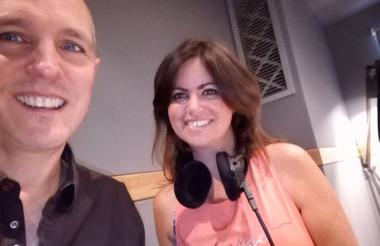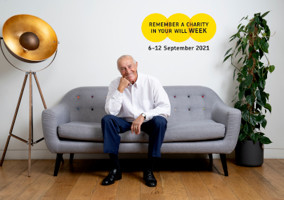Before the pandemic, I spent a radio day talking legacies with the incredible ‘Bowel Babe’ Dame Deborah James, and that day is front of mind as I think about some of my most inspiring moments working with Remember A Charity.
As we sat in the studio speaking of her passion to use her experience of bowel cancer for good, it struck me that her approach is closely aligned to what we strive to achieve around legacies.
People’s inspiration to leave a gift comes from their life journey and the charities that touched them along the way. And, as with Deborah’s determination to save lives, a legacy is a rare chance to protect others and influence change long after you are gone.
While legacy giving has become increasingly prevalent in recent years, there is far greater potential for growth. What can charities do now to drive that growth?
Every charity needs a legacy champion
Legacies are too important to be left to everyone but no-one. They need time, energy – and budget – and of course, they need to be championed. They might be seen as fundraising’s golden goose, but all too often, legacies don’t have a central focus across the organisation. In fact, when we surveyed fundraisers about their charity’s approach to legacies, although two-thirds said they were a top priority, the majority also said they were less discussed than other areas.
The charities I see making a real success of legacies champion them across the organisation, with advocates at all levels including the board, ensuring gifts in wills are drawn into all relevant discussions and work programmes.
Conversation is king
Over the years, we’ve experimented with creative, funny and extreme campaigns to raise the profile of legacy giving. There’s no doubt that big PR stunts drive fame – just look at Rocky Taylor’s leap from Battersea Power Station or our Café de Mort (serving a menu of potentially deadly dishes) – but we need to create space for conversation. Driving behaviour change means more than awareness-building. Campaigns need to open up dialogue and tackle taboos, and digital has been hugely important here.
Digital is revolutionising legacy fundraising for many, enabling us to reach large numbers of the over-55s in a targeted and timely way. We can connect with them when we know they are most likely to be considering their will, and that allows us to use our budget strategically and maximise impact.
Let’s not forget too that the shift to digital is helping to level the playing field for smaller charities, many of which are breaking into the legacy market for the first time – and making a real success of it.
Make legacy giving easy
Ultimately, to drive behavioural change, we need to make legacy giving easy, attractive, social and timely. There may be more steps for donors to take than with other forms of giving – like having a will – but legacies themselves are very simple. It is crucial to show people that it is easy and to avoid overcomplicating things with legal jargon.
As for making it attractive, this is where fundraisers often excel with moving and motivational messaging. Inheritance tax breaks too can be a powerful incentive, particularly for the wealthy, and that’s why we’ve worked so hard with government to retain that incentive.
So, what about making legacies social and timely? As humans, we have an inherent need to be social, looking to others for reassurance and cues on what to do. That’s where real-life stories showing ‘people like me’ come in. And if we want to encourage supporters to act before the inspiration wanes, we need to promote legacies in a timely way – at those key life stages when people are most likely to be making a will.
Collaboration as the accelerant
Above all, it is the sector’s willingness to collaborate – to trust, learn and grow together – that sets legacies apart from other areas of fundraising, escalating the pace of growth. When we work together, we combine our strengths. We can be bolder and braver, breaking down barriers and testing new strategies. We can combine our collective experiences, learning faster, while laying the foundations for charities to open up their own legacy conversations.
Through collaboration, the sector has a voice. We can convince government to protect legacy giving and build a network of legal advisers and ambassadors for charitable will-writing.
We are on the brink of the largest intergenerational wealth transfer of all time. So, if there’s one message I’d leave behind, it’s that this is the moment to take action; to come together and recognise this unique opportunity to maximise impact and normalise legacy giving.
Related articles












